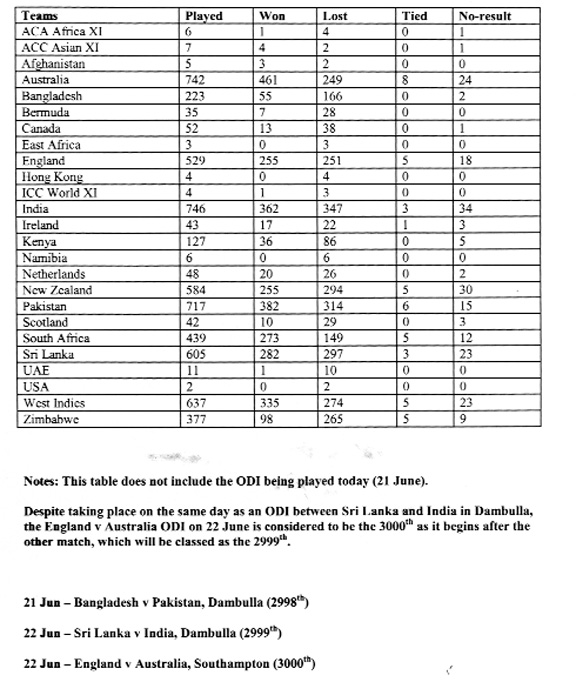-Haroon Lorgat
International Cricket Council (ICC) Chief Executive Haroon Lorgat has highlighted the staging of the 3,000th One-Day International (ODI) in Southampton today by saying the limited-overs format of the game will remain strong long into the future.
 The first recognised ODI took place in Melbourne on 5 January in 1971 between Australia and England and today’s fixture between the same sides will be the 3,000th time teams have gone head-to- head in that form of international cricket.
The first recognised ODI took place in Melbourne on 5 January in 1971 between Australia and England and today’s fixture between the same sides will be the 3,000th time teams have gone head-to- head in that form of international cricket.
“That game at the Melbourne Cricket Ground was arranged on very short notice after a Test match had been washed out and nobody was really sure what would happen,” said Lorgat.
“When around 46,000 people showed up to watch I think the organisers realised they were on to something big. Since that day it has been hugely successful and we have been treated to some of the great moments of cricket through ODIs.
“Centuries in World Cup finals by Clive Lloyd, Viv Richards, Aravinda de Silva, Ricky Ponting and Adam Gilchrist coupled with some amazing other individual performances throughout the history of the one-day game from players like Richard Hadlee, Javed Miandad, Herschelle Gibbs, Joel Garner, Muttiah Muralitharan and Graham Gooch have entertained generations of cricket fans all over the world.
Even this year, Sachin Tendulkar’s double century in an ODI showed this format still had the capacity to inspire thrilling feats of brilliance from the world’s best cricketers.
“That first ODI nearly 40 years ago involved the bowling of 40 eight-ball overs per innings and the structure of the game has been constantly evolving ever since. Over the years various initiatives have been tried and refined and we now have quite a different spectacle to the one that was first on show.
“Coloured clothing, white balls, fielding restrictions, bowling limitations, powerplays, free-hits and many other aspects of the game have all been introduced but the unmistakable and unshakable core skills required by batsmen, bowlers and fielders are still intact.
“And the broad appeal remains strong. ODIs still attract big crowds and enormous television viewing figures. The ODI series between England and Australia that gets underway tomorrow will be hugely well attended and the recent ODIs in Ireland and Scotland were also sold-outs.
“As we prepare for the 10th staging of the ICC Cricket World Cup in Bangladesh, India and Sri Lanka next year, the importance of this format to the game remains very high. I have no doubt the ODI will continue to adapt and evolve – in fact we always encourage our Members to tyl new initiatives at the domestic level to see if they work – and above all, I have no doubt the ODI will continue to strengthen long into the future,” said Lorgat.
Over the past four decades, India has played more ODIs than any other team with 746, out of which it has won 362 and lost 347. Australia is the next most prolific ODI team having played four fewer, 742. However, the Aussies have won an impressive 461 and lost just 249. Interestingly, Australia has tied more matches than any other with no fewer than eight ODIs ending in thrilling stalemate.
The table below shows every team, in alphabetical order, that has played ODIs since the concept was first developed nearly 40 years ago.






